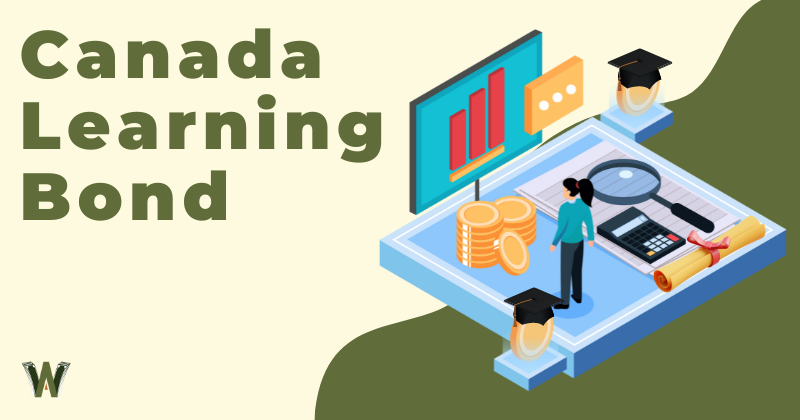Have you heard of the Canada Learning Bond (CLB) and are wondering how it specifically works?
The Canada Learning Bond (CLB) is a government grant that is added to Registered Education Savings Plans (RESPs) for children belonging to low-income families.
No personal contributions are required to receive the CLB. The government contributes up to $2,000 through the CLB, with $500 in the first year of eligibility and $100 each year that the child continues to be eligible (up to age 15).
Registered Education Savings Plans (RESPs) are a very effective way to save for your children’s future tuition or education costs since you can take advantage of not only the CLB (if you qualify) but also the Canada Education Savings Grant (CESG).
I will cover the Canada Learning Bond and how it works below.
Registered Education Savings Plan (RESP): An Overview
Before going into details about the Canada Learning Bond, it is important to have a good understanding of what an RESP is. Money within an RESP can be used for:
- College
- Trade school
- University
- Apprenticeship program
- CEGEP (in Quebec)
Registered Education Savings Plans (RESPs) are plans that are designed to shelter money that is allocated to paying for a child’s future education.
Due to the many benefits of an RESP, including free money that can be obtained from the government, it is an excellent way to invest over the long term to cover tuition costs.
Money that is contributed to an RESP does not reduce your income for tax purposes like it would when contributing to an RRSP. Investments within an RESP grow tax-free until money is taken out of the account.
Individuals can contribute up to a maximum of $50,000 to an RESP per child. Contributions can come from anyone (not necessarily just parents) and there is no maximum amount per year that can be contributed (as long as the child’s total RESP amount is $50,000 or less).
One of the key benefits of a Registered Education Savings Plan is that the government generally matches at least part of the contributions that you make to the account in one form or another. Contributions to an RESP are limited to $50,000 per child and are not restricted to a specific maximum per year.
Canadians can take advantage of free contributions from the government to their children’s RESPs through the Canada Education Savings Grant (CESG) as well as the Canada Learning Bond (CLB).
Canada Education Savings Grant (CESG)
The Canada Education Savings Grant is the most common way to receive a contribution from the government to your Registered Education Savings Plan. The government matches up to 20% of your RESP contributions through the CESG, up to $500 each year per child.
The CESG is in effect for each child until they reach the age of 17 years old. If you contribute at least $2,500 to a child’s RESP and they are below the age of 17, you will receive the maximum amount of CESG ($500).
If you do not contribute to an RESP, the government will not provide any grants through the Canada Education Savings Grant.
Canada Learning Bond (CLB)
The Canada Learning Bond is a second way that the government can contribute money to a Registered Education Savings Plan.
The CLB is specifically designed to help low-income families – in order to obtain the CLB you must submit an application when opening an RESP. If you qualify, the government will make the payments automatically.
The CLB amount can be a maximum of $2,000, with $500 being offered in the first year of qualification and $100 in each future qualifying year.
The CRA continually assesses each year if you continue to qualify for the CLB. You do not need to make RESP contributions in order to qualify to receive the CLB each year.
The RESP account is very versatile and can hold most types of investment asset classes, including stocks, bonds, cash, GICs, funds, and more.
If you are looking to learn more about Registered Education Savings Plans, be sure to read my guide discussing what is an RESP in Canada.
When to Open a Registered Education Savings Plan

If you are planning to have kids (or have kids on the way), it is critical to plan to open RESPs very early on. A Registered Education Savings Plan can be opened as soon as a child is born and can list the newborn as the plan’s beneficiary.
It is important to open the RESP as soon as possible in order to collect the maximum amount of government grants possible, especially if you are part of a low-income family and qualify for the CLB.
Keep in mind that while there is no annual limit to how much can be contributed to an RESP in a year, the government matches up to $500 per year and RESPs have a maximum of $50,000 per child.
This means that it is best to stagger contributions to a child’s Registered Education Savings Plan in order to get the most benefit out of it.
While investment performance and growth can be uncertain in the future, government grants through the CLB and CESG are a certainty that you should definitely be taking advantage of.
Conclusion

Taking advantage of the many benefits of an RESP when preparing for your children’s tuition expenses can be very beneficial over the long term.
You can either receive matching government grants of up to $500 per year per child through the CESG or up to $2,000 in grants through the CLB (if you qualify as a low-income family).
It is important to set up RESPs for children as early as possible in order to take advantage of government grants for as long as possible. The RESP is a staple as part of a household’s financial plan.
If you are new to investing, make sure to read my guide on how to start investing in Canada in order to avoid as many unnecessary beginner mistakes as possible.

